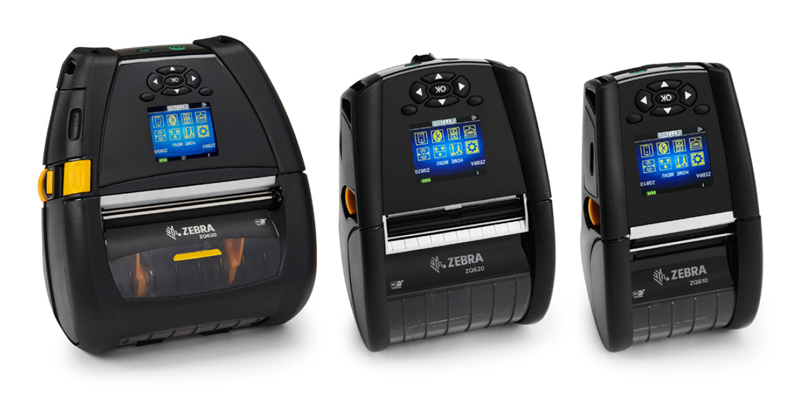Tips for Refreshing Barcode and Mobile Device Software with Android and iOS Devices
- Hardware
If you’re reading this, you probably have mobile devices in your warehouse or shop floor. You may also be using hardware reaching its end-of-life, especially if they run Windows CE. It’s important to consider refreshing your mobile sooner rather than later. Waiting too long leaves your devices open to security vulnerabilities and suboptimal performance, both of which invite added costs.
Undertaking a periodic refresh of mobile hardware and software is key to efficiency and security. The small investment more than pays for itself.
According to the RFgen Digital Inventory Report, 59% of companies utilizing mobile systems plan to expand or upgrade the use of mobile solutions in the coming years.
Here are a few tips for refreshing your hardware and software:
Understanding the Need for a Refresh
There are many reasons why your operation may need to replace existing mobile devices. The most common reasons to refresh your current hardware include:
- Security concerns for devices running old operating systems
- Aging hardware in need of replacement
- Previous-gen devices that can’t use latest features
- Wrong devices for the environment
Since mobile technology is in a state of constant evolution, outdated software can operate inefficiently and pose undue security risks. Newer operating systems offered by Android and iOS are more efficient and secure than legacy versions.
And then there’s the hardware itself. Handheld devices wear out with use, breaking more frequently as time goes on and requiring more resources to keep them running. Newer devices can relieve technical resources of this extra burden.
Operating System: Android vs iOS
One of the first questions people have is about the operating system: What operating system is best for mobile devices in the warehouse?
With the sunsetting of legacy operating systems like Windows CE, and later Windows 10 IoT in 2025, Android has taken over as the leader in the enterprise mobility space.
Apple iOS
Apple’s iOS platform may be sometimes used selectively in the supply chain. Unfortunately, its software is confined to non-rugged hardware like the iPhone and iPad. These consumer devices tend to have a short lifespan inside the warehouse.
Apple is also reportedly the only supplier of these devices in the warehouse as outside retailers are not permitted to sell them for supply chain use. These factors contribute to a greater total cost of ownership, or TCO, per device.
Android OS
Unlike iOS, Android is designed for easy adoption by third-party providers, fueling its rise to prominence. Today, Android holds the clear lead as the go-to operating system for the supply chain. Android OS can run on both consumer- and industrial-grade (“ruggedized”) devices. Its built-in future-proof upgrades ensure the longevity of Android for years to come.
Device Selection and Compatibility
Another difficult choice you may be facing is about what devices to get. This is where having a knowledgeable partner who can provide both mobile software and hardware is helpful. Their hardware specialists can advise you on the optimal devices for your specific needs and compatibility requirements.
When researching possible devices to replace your old hardware, consider the following:
- Device compatibility with operating system
- Environment: Is ruggedized hardware required?
- TCO: will cheaper devices need to be replaced more often
- Scanning range requirements (short, medium, long)
- Will specialized use dictate other device needs?
Android, with its vast array of devices, offers flexibility and options. It’s essential to match device capabilities with operational demands—be it battery life, screen size, or processing power.
Even though many modern mobile computers resemble consumer phones, different models are better suited for certain use cases. Again, having an expert to consult on this matter can be helpful.
Barcode Software Options
Another pivotal factor is ensuring the chosen device is compatible with the intended barcode software and existing infrastructure. Investing time in research and trials can prevent future challenges.
Enterprise mobile barcoding solutions like RFgen operate seamlessly across a concurrent mix of Android and iOS devices. With certified integration to the world’s top ERP platforms, RFgen provides a flexible, hassle-free deployment with very low requirements to maintain. RFgen can be easily and quickly deployed across multiple device screen sizes and form factors.
Regardless of your choice, the barcode software should be capable of taking advantage of native device capabilities:
- On-board camera and imaging capabilities
- Millisecond barcode scanning to ERP
- GPS, Wi-Fi, and 4G/5G radio bands
- Network-disconnected operations
Many barcode solutions operate on web-based applications. While this simplifies compatibility by using a web browser, web-based apps can’t take full advantage of the device’s hardware capabilities, nor can they operate fully offline.
Maintenance and Updates
Software Maintenance
One factor that affects the long-term viability of mobile hardware is maintenance. How much effort must IT invest to keep the devices up and running in the long term?
Ideally, as little as possible.
Hardware manufacturers like Honeywell and Zebra Technologies include a version of Android that is viable for at least 5 years. So minimal upkeep is required in that area.
The complexity of your barcode software also impacts upkeep requirements. A low-burden software like RFgen helps keep technical resources free for other projects. When a problem does arise, the administrator can log in to any device remotely for troubleshooting and resolution.
Hardware Maintenance
As for the devices themselves, the hardware grade is a strong indicator of usable lifespan. Consumer-grade devices like smartphones and tablets are more inexpensive per device, but rarely hold up to the rigors of an industrial environment. Thus, consumer devices must be replaced often.
On the other hand, ruggedized enterprise devices are more expensive initially, but are purpose-built for industrial settings. Additional safeguards can block dust, moisture, high/low temperatures, and even protect the device against repeated drops onto concrete. Therefore, they tend to have a lower overall TCO.
Keeping Software Up to Date
Having the latest version of a software product is arguably more important in the enterprise setting than in the consumer space. Patches and new releases protect against cyberthreats and vulnerabilities. Both Android and iOS include the option for automatic updates.
But when an older operating system is no longer supported, fewer updates are provided, if at all, putting devices at risk. This is why it’s so crucial to refresh hardware running deprecated software.
Don’t Forget Mobile Printers
While barcode and label printers don’t require an OS, they are an integral part of your mobile ecosystem. Equipping workers with mobile printers can reduce unnecessary backtracking, enabling on-demand printing. Likewise, other types of programmable printers, such as desktop printers and heavy or light industrial printers, are essential for inventory handling.

Explore Barcode and Label Printers
READ NOW »Hardware Refresh: An Investment in Efficiency and Security
Supply chains must be fast, safe, and easy to maintain. Companies that hold onto aging hardware and software systems risk inefficiency and vulnerability to cyberthreats. Therefore, refreshing barcode and mobile device software is not just a technical decision, but a strategic one.
While a hardware refresh may require an initial investment, the cost more than pays for itself in added efficiencies, capabilities, and security. Investing in the latest enterprise hardware from time to time is essential to keeping your supply chain running at optimal performance.






